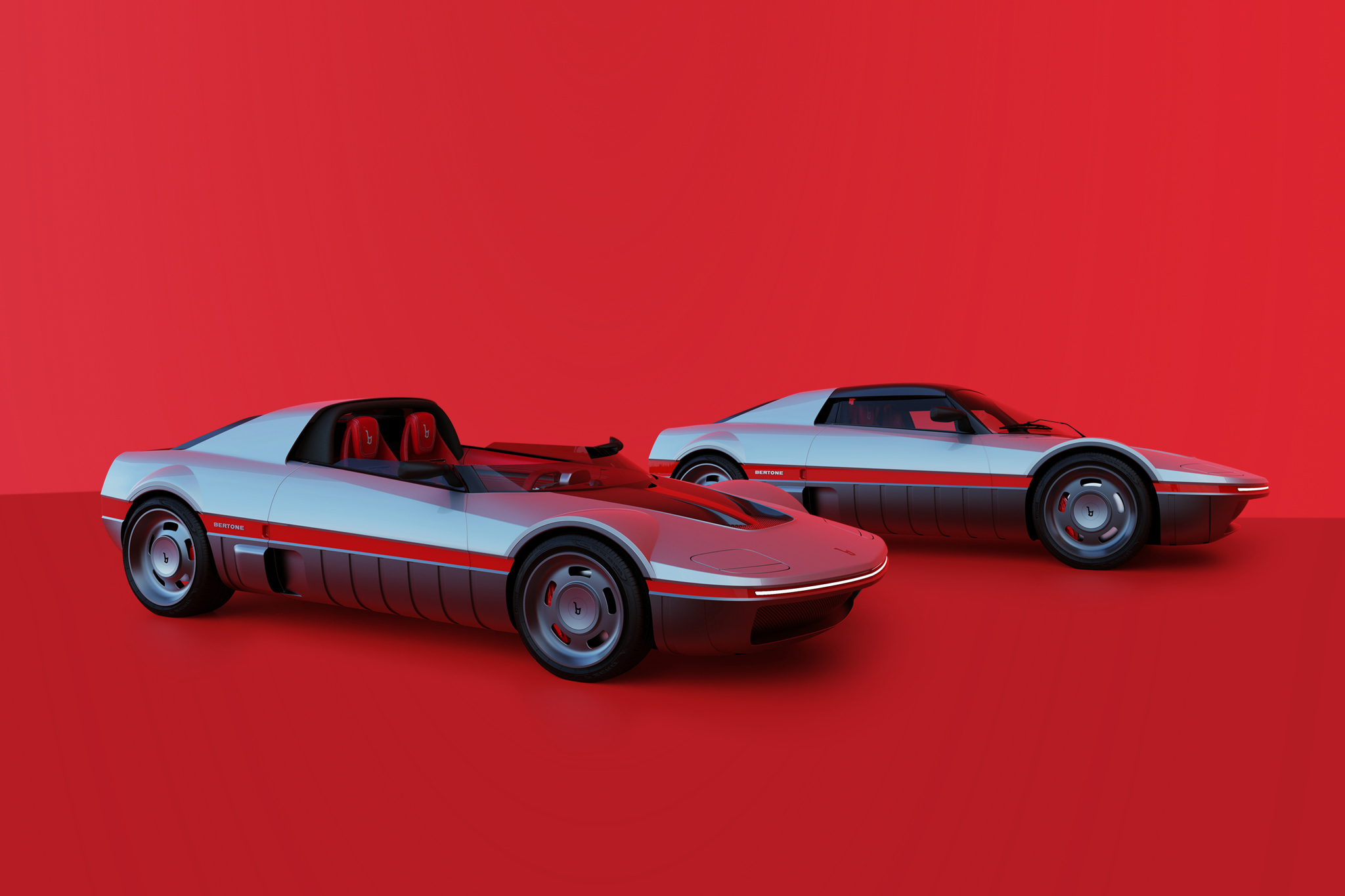30 Years of Mazda MX-5
When Mazda announced a new two-seater roadster at the end of the 1980s, some experts grinned mildly. The great era of the roadsters, especially from Great Britain but also partly from Italian brands, seemed to be over, also due to the threat of a ban on open cars in the USA. Some manufacturers had already withdrawn from this segment, others were far from being able to achieve their former sales successes. And yet a Japanese manufacturer dared to enter this category for the first time. Inspired by the so-called Lightweight Sports Cars (LWS), as they were successfully distributed by MG, Austin-Healey, Triumph, Lotus, Fiat and Alfa Romeo in Europe and the USA in the 60s and 70s, Mazda developed a heart-and-soul-project of some engineers around project manager Toshihiko Hirai. The marketing department didn’t see any sales opportunities for a two-seater sports car without a fixed roof. Ultimately, however, the Mazda board decided to bring it into series production, but expected only around 5,000 units to be produced annually, of which 3,000 were to be exported to the USA and about 500 to Europe.
The Mazda MX-5 made its debut at the Chicago Auto Show in 1989. In North America this model received the name ‘Miata’ and on the domestic market in Japan it is known as the ‘Eunos Roadster’. Already during the still running Auto Show so many orders were received for this vehicle that the planned production quantity couldn’t be sufficient. The quota planned for Germany for example was sold out within three days. Accordingly, a grey import market developed quickly, for which mainly vehicles from the USA and Canada were shipped all over the world. To the sales start the MX-5 was only available with a 1.6-liter four-cylinder engine and 85 kW/115 hp. In 1994 a 1.8-liter engine with 96 kW/131 hp replaced it. One year later another 1.6 was available again, this time with only 66 kW/90 hp. While the MX-5 is mainly known for its manual five-speed transmission with extremely short shifting distances at the lever, the 1.8 was also available with an automatic transmission on request. Various special edition models ensured constant demand worldwide. Prototypes with a fixed coupé roof or hydrogen drive, on the other hand, didn’t go into series production. After 431,506 units had left the production line by 1998, not only the marketing department was aware of their original error, but also the time was ripe for a second model generation.
Internally, the MX-5 runs as the ‘N’ series at Mazda, followed by another letter in alphabetical order for each model generation. The original model NA therefore was followed by the NB in 1998. Due to changed approval regulations and improved technology, the second generation MX-5 got a little bigger, but also more powerful. The 1.6 now had 81 kW/110 hp and the 1.8 103 kW/140 hp. In the USA, after a facelift in 2000, there was also a turbocharged Mazdaspeed version for a limited period. Shortly before the end of the NB’s production period, the total number climbed over 700,000 produced vehicles of this type. In addition, there were some concept cars with a fixed roof again, which Mazda primarily showed at the Tokyo Motor Show. A Coupé version was put into limited production of just 200 units for the Japanese market.
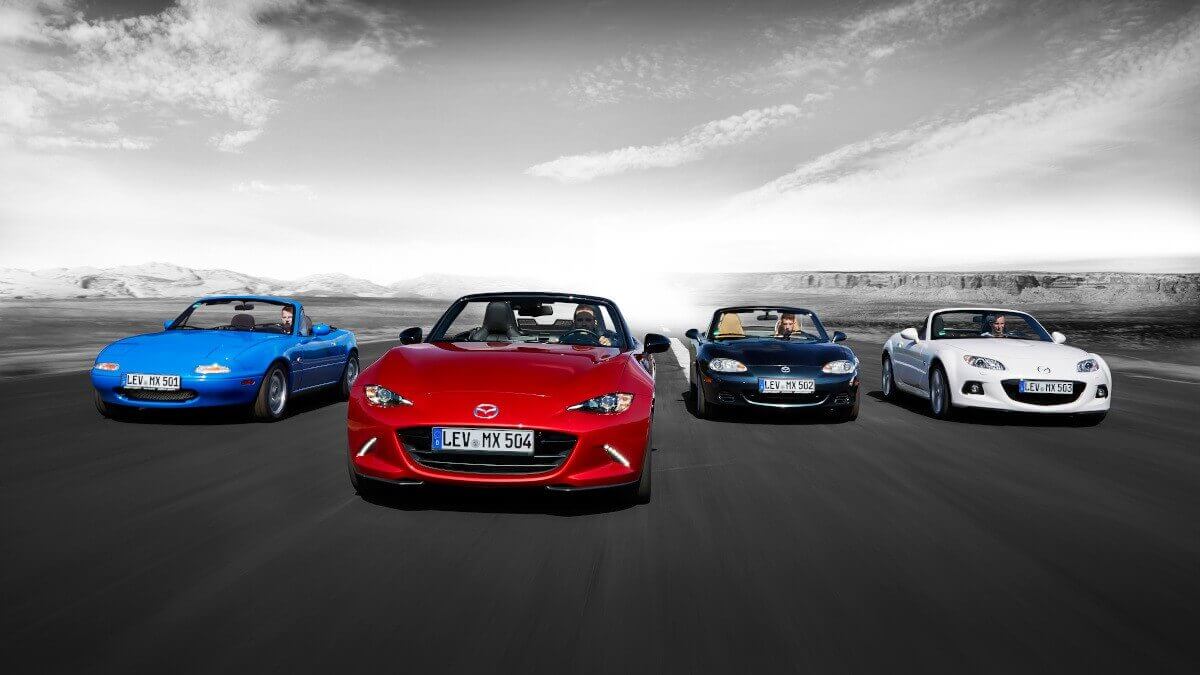

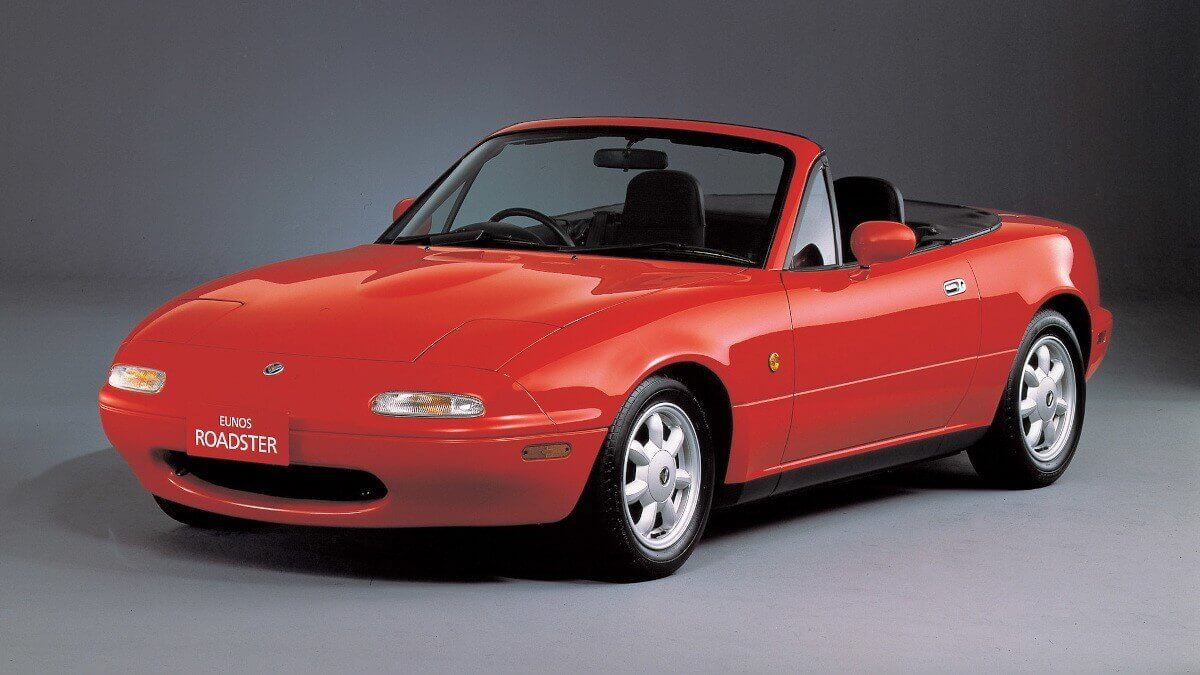

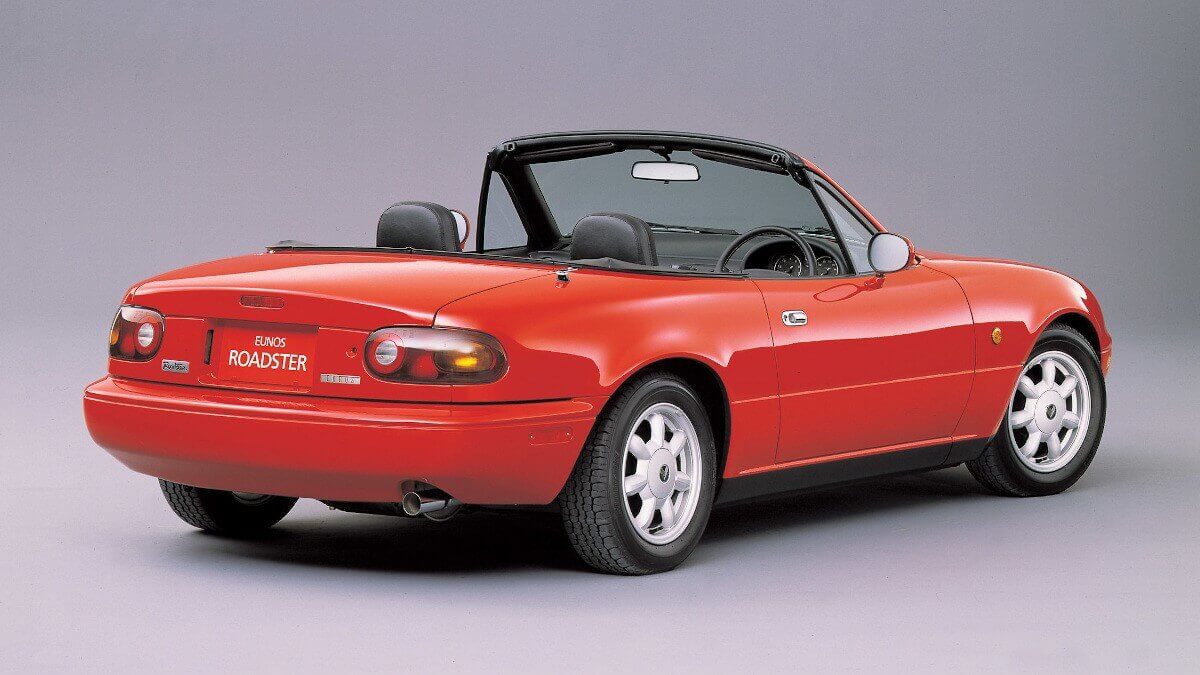







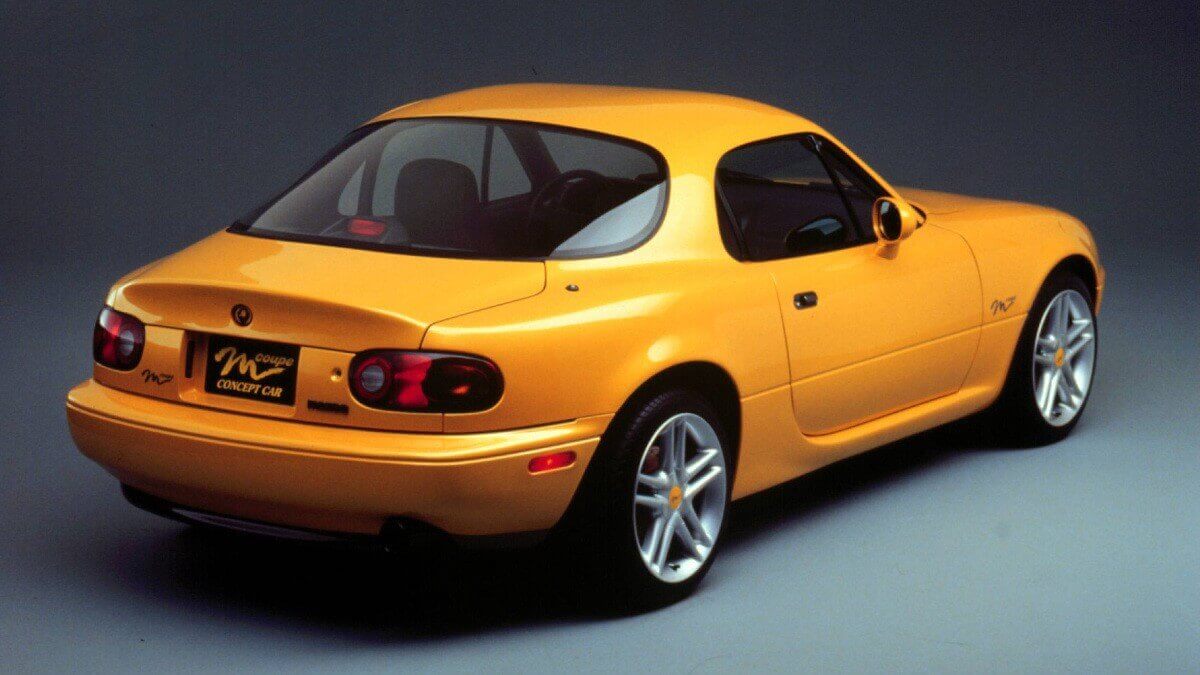











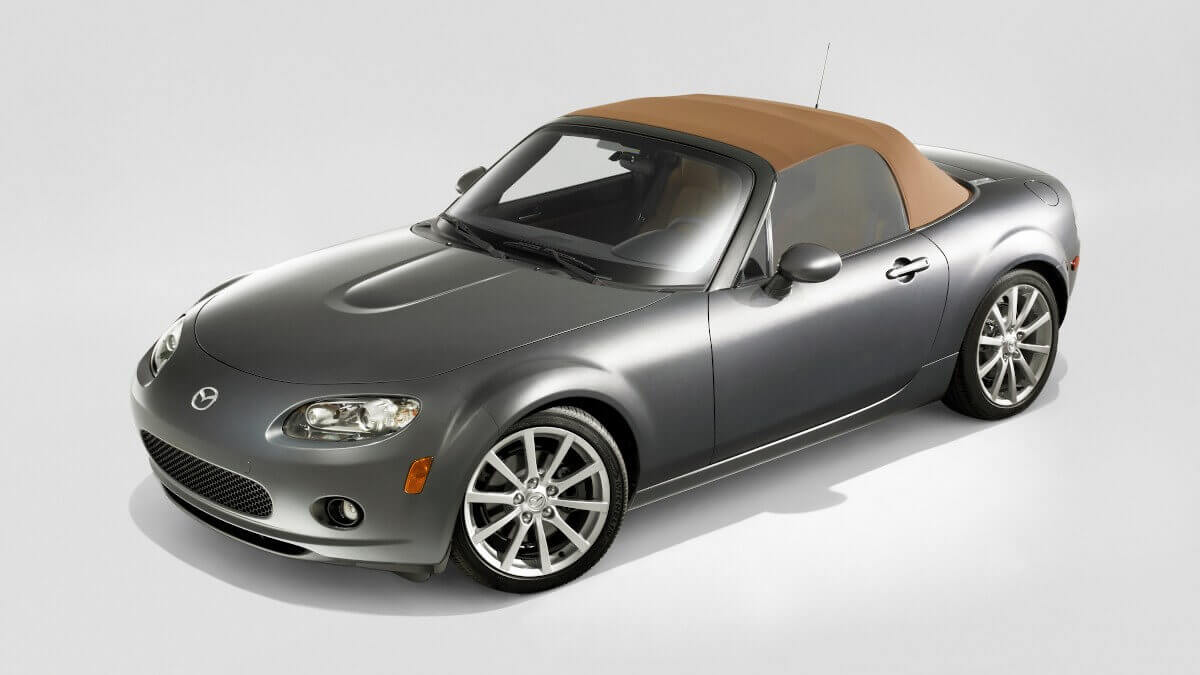











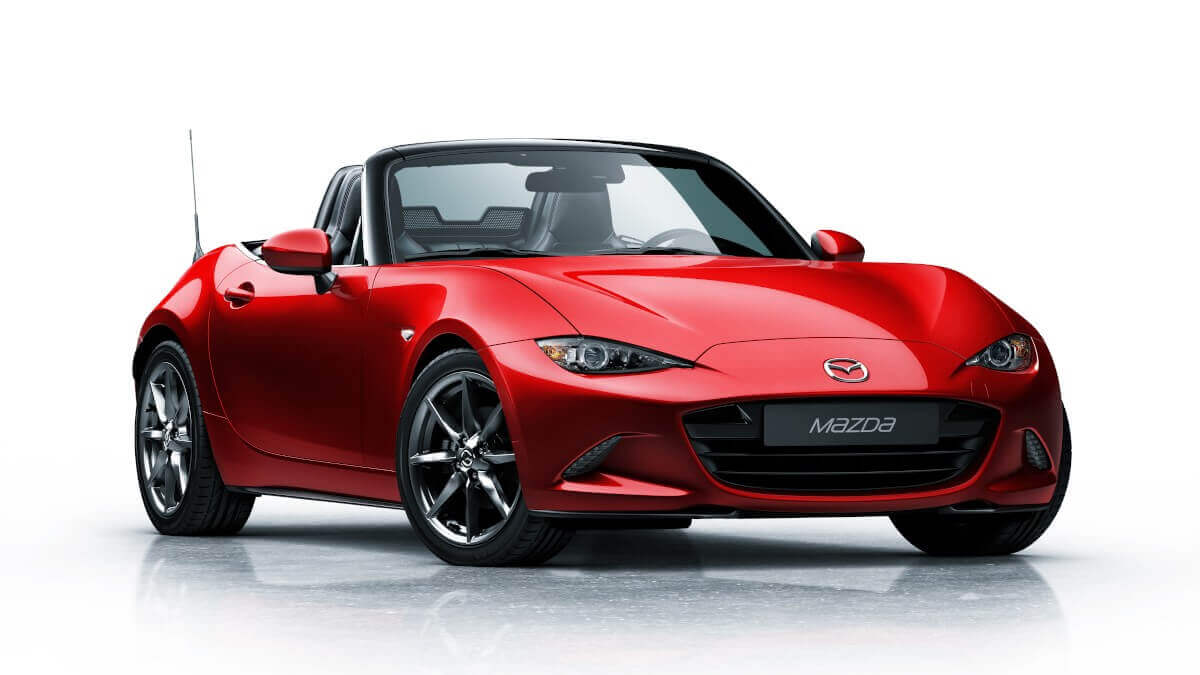



In 2005, the third generation followed with the NC, whose floor assembly basically came from the RX-8 presented two years earlier. Under the bonnet it had either a 1.8-liter four-cylinder engine with 93 kW/126 hp or a two-liter engine with 118 kW/160 hp. While the smaller engine was basically combined with a five-speed manual transmission, customers could choose a six-speed manual transmission or a six-speed automatic for the larger engine until 2013. Subsequently, the manual six-speed box was part of the standard equipment. Around one year after the introduction of the NC, Mazda also expanded its model range with the Roadster Coupé, which featured a three-piece plastic hardtop instead of the otherwise familiar soft top. Once again, there were numerous special edition models worldwide and also concept cars that further developed the basic ideas of the MX-5 in various directions. In 2009, for example, the radical MX-5 Superlight without any windows or a roof was on show at the IAA in Frankfurt, reducing the unladen weight by around 135 kilograms. However, this version didn’t stand a chance in series production. Even before the model was updated in 2008, Mazda exceeded the mark of 800,000 units built.
One year after the market launch of the still current MX-5 ND, the total production figure in April 2016 helped the MX-5 climb over the mark of one million units. In the meantime, more than 1.1 million cars have rolled off the assembly lines in Hiroshima, Japan. This makes the open Mazda the best-selling roadster in the world. In the ‘Kodo’ brand design, generation four shows itself 40 millimeters shorter, 20 millimeters lower but also 15 millimeters wider than its predecessor NC. At the same time, the weight was reduced by 80 to 100 kilograms, depending on the equipment level. As the successor to the Roadster Coupé, Mazda at the end of 2016 presented the MX-5 RF with electric folding roof and new B-pillars. The power sources of the ND are a 1.5-liter engine with 131 hp (132 hp since August 2018) or a two-liter engine, which initially delivered 118 kW/160 hp and, since a facelift last year, even 135 kW/184 hp. In Germany, only the MX-5 RF with the larger engine is optionally available with an automatic transmission. The Fiat 124 Spider and its sportier offshoot Abarth 124 Spider are also based on the platform of the MX-5 ND.
Until the end of January 2020, the Mazda Classic Automobil Museum Frey in Augsburg will be showing various variants from the 30-year history of the MX-5 in a special exhibition. A car, which was originally only considered to be produced in low-volume production, became a worldwide hit and achieved cult status within a few years. Now, the early cars can already be considered as classic cars in some countries. Happy Birthday MX-5, Miata and Eunos Roadster.
Images: Mazda


